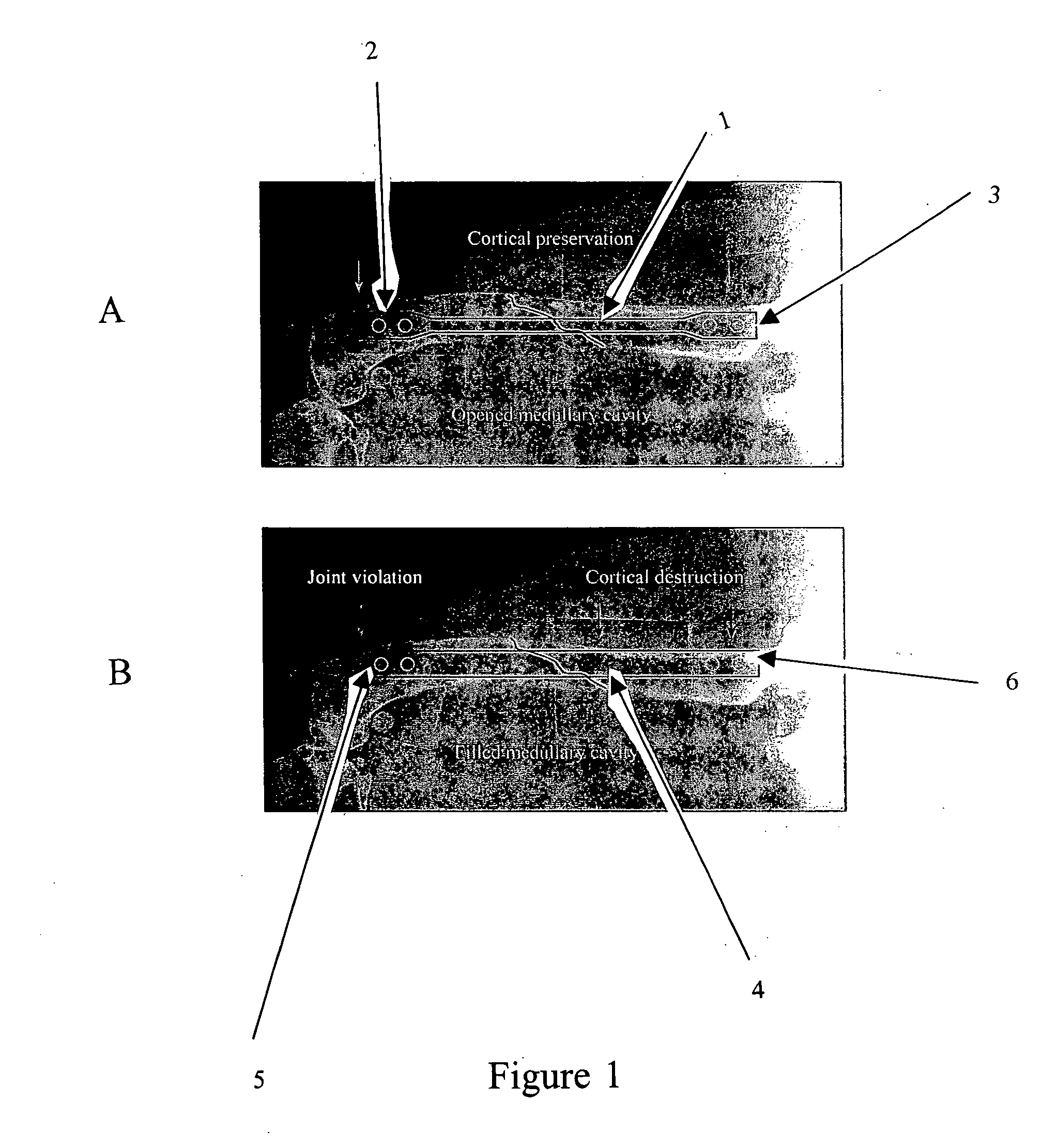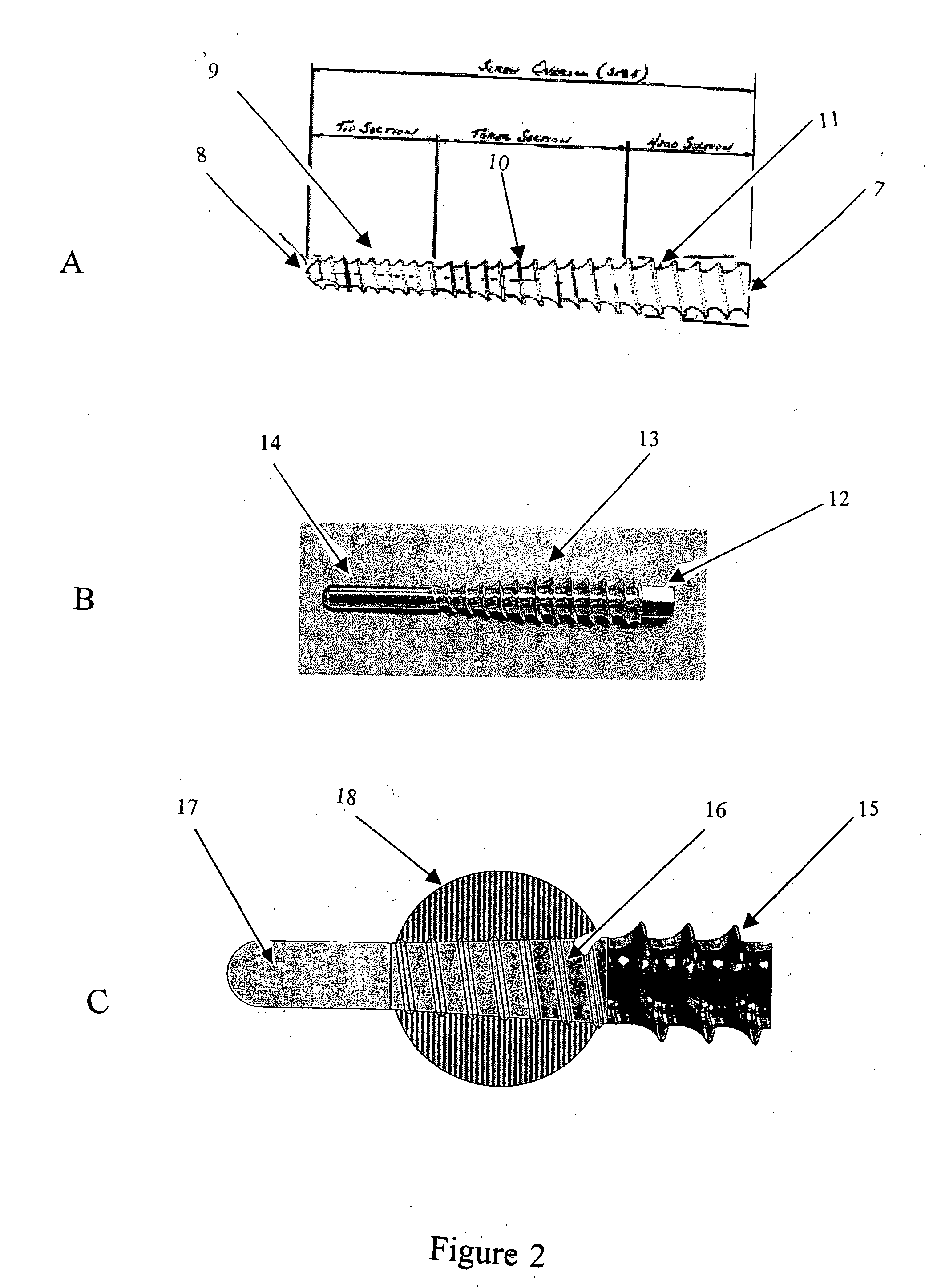Devices and methods for interlocking surgical screws and nails
- Summary
- Abstract
- Description
- Claims
- Application Information
AI Technical Summary
Benefits of technology
Problems solved by technology
Method used
Image
Examples
example i
ILNn, Conventional ILN, & PRC Cross-Comparison Using a Synthetic Bone Model
[0205] The purpose of this study is to compare the biomechanical properties one embodiment of the interlocking nail design to: 1) currently available ILNs using screws or bolts and 2) to a PRC using a gap fracture model.
[0206] A synthetic bone substitute represents canine tibiae. Specimens will be divided into 6 groups (n=12 / group) and instrumented with either a 6 mm or an 8 mm conventional ILN with screws or bolts, a 6 mm novel conventional ILN with novel screws, or a PRC. To mimic a comminuted fracture, a 60 mm mid-diaphyseal defect will be created in all specimens. Specimens will be tested in either torsion, compression, or 4-point bending (n=4 / testing mode) using an Instron machine.
[0207] In an attempt to limit specimen variability and to circumvent the increasing difficulty of procuring canine bones, a synthetic tibial model will be custom made from an E-glass-epoxy composite material (SAWBONES®, Paci...
example ii
ILNn, Conventional ILN, & PRC Cross-Comparison Using a Synthetic Bone Model
[0227] This example provides biomechanical data with a direct comparison between screwed or bolted conventional ILN systems and a novel conventional ILN design.
[0228] A tibial bone model consisting of PVC tubes was used. The tubes were custom worked to have a total length of 210 mm, an inside diameter of 9 mm and a wall thickness of 3 mm. These dimensions were used to mimic respectively the mean length, medullary cavity diameter and cortical thickness of canine tibiae used in a previous similar study (CAP #81-2156-D). Bone models were divided into 6 groups (n=2 / group) and were implanted with either one of the following: [0229] Groups 1 & 2: 6 mm×160 mm conventional ILN with 4 bicortical 2.7 mm screws (ILN6s) or bolts (ILN6b) [0230] Groups 3 & 4: 8 mm×160 mm conventional ILN with 4 bicortical 3.5 mm screws (ILN8s) or bolts (ILN8b) [0231] Group 5: Novel conventional ILN and screws (ILNn) [0232] Group 6: 4 mm×...
example iii
Torsional Analysis of an Hour-Glass Shaped Conventional ILN
[0241] This example compares a commercially available ILN8 (8×185 mm) that is used to treat comminuted tibial diaphyseal fractures in the most common dog in our practice, mongrel dogs weighing approximately 30 kg, to comparably sized embodiment of an ILNn using an SCP (i.e., an ILNn-SCP system) as contemplated herein.
[0242] The ILNn—SCP system used in this example meets the following constraints: [0243] 1) Provides a rigid interaction with the nail. [0244] 2) The shape limits interference with endocortices and limits the risk of distal joint infraction while facilitating fracture reduction. [0245] 3) The shape and size facilitates successful insertion during surgery.
Secondary constraints related to addressing theoretical stiffness and strength of the ILNn —SCP system, were also considered in the design, including, but not limited to:
[0247] 2) An AM...
PUM
 Login to View More
Login to View More Abstract
Description
Claims
Application Information
 Login to View More
Login to View More - R&D
- Intellectual Property
- Life Sciences
- Materials
- Tech Scout
- Unparalleled Data Quality
- Higher Quality Content
- 60% Fewer Hallucinations
Browse by: Latest US Patents, China's latest patents, Technical Efficacy Thesaurus, Application Domain, Technology Topic, Popular Technical Reports.
© 2025 PatSnap. All rights reserved.Legal|Privacy policy|Modern Slavery Act Transparency Statement|Sitemap|About US| Contact US: help@patsnap.com



